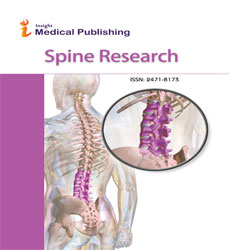Abstract
Ankylosing Spondylitis Versus Internal Disc Disruption: A Case Report Treated Successfully with Intradiscal Platelet-Rich Plasma Injection
We report the case of a 21-year-old female who presented with severe disabling low back pain radiating to both buttocks for 1 year. She was initially diagnosed with ankylosing spondylitis (AS) based on her complaints of persistent low back pain with bilateral sacroiliitis found on magnetic resonance imaging (MRI) of the sacroiliac joints. Despite testing negative for HLA-B27 and lack of other positive imaging to support the diagnosis, she was still treated presumptively as a patient with this disease. These symptoms were debilitating to the point where she withdrew from college, discontinued horseback riding, developed depression, and required antidepressant treatment. She did not improve with oral non-steroid antiinflammatory drugs, neuropathic and opiate pain medications, or a trial of Etanercept (Enbrel). She then presented to our outpatient physiatry office for a second opinion. Her axial low back pain was exacerbated with positions of increased disc load (sitting/lifting/forward bending), and the physical exam was positive for painlimited spine range of motion in flexion greater than extension and dural tension signs. Therefore, a clinical impression was formed that her pain may be more related to an internally disrupted disc (IDD) than AS. This diagnosis was further supported when she failed to obtain any relief with fluoroscopically guided bilateral sacroiliac joint injections. MRI of the lumbar spine was ordered, which revealed a small posterior annular fissure at L5-S1 that was later confirmed as the pain generator with provocative discography. The patient’s pain and function improved transiently with a caudal epidural steroid injection and were significantly alleviated with two serial intradiscal platelet-rich plasma (PRP) injections. The patient returned to college, discontinued anti-depressant and pain medications, and resumed all activities 1 year from the second PRP injection. Additionally, she has had no further treatment of her presumed AS.
Author(s):
Richard G Chang, Nicole R Hurwitz, Julian R Harrison, Jennifer C, and Gregory E Lutz
Abstract | Full-Text | PDF
Share this

Google scholar citation report
Citations : 128
Spine Research received 128 citations as per google scholar report
Abstracted/Indexed in
- Google Scholar
- China National Knowledge Infrastructure (CNKI)
- Directory of Research Journal Indexing (DRJI)
- WorldCat
- International Committee of Medical Journal Editors (ICMJE)
- Secret Search Engine Labs
- Euro Pub
Open Access Journals
- Aquaculture & Veterinary Science
- Chemistry & Chemical Sciences
- Clinical Sciences
- Engineering
- General Science
- Genetics & Molecular Biology
- Health Care & Nursing
- Immunology & Microbiology
- Materials Science
- Mathematics & Physics
- Medical Sciences
- Neurology & Psychiatry
- Oncology & Cancer Science
- Pharmaceutical Sciences

